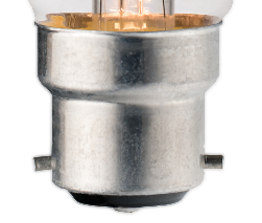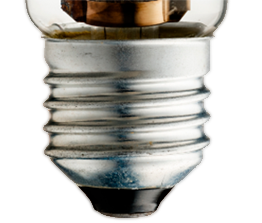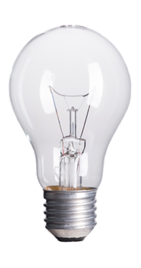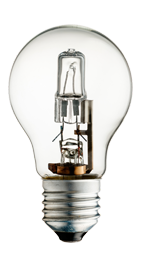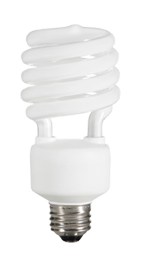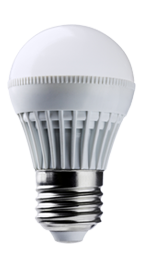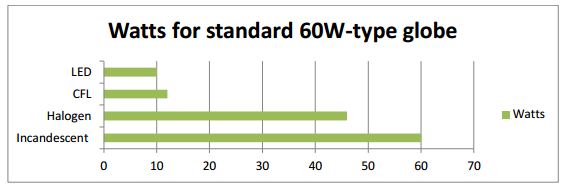Know exactly what to purchase the next time your globe burns out.
STEP 1: CAPS AND BASES
As you remove the light bulb from its socket, take a look at the cap fitting: Does the bulb have a bayonet or screw cap?
Bayonet
The globe has a push, twist and lock action.
Screw
The globe has a screw in action.
STEP 2: LIGHTING TECHNOLOGY
Next, identify the lighting technology (incandescent, halogen, CFL, LED). This way you can choose the right bulb to best suit your needs.
Incandescent
These are inexpensive and have been around for the past 100 years. They may be cheaper to purchase but they waste energy by creating more heat than light. They tend to have a short lifespan.
Halogen
These are incandescent bulbs with halogen gas filled inside. They last longer and are about 20% more efficient than an ordinary incandescent bulb. Halogen globes are available in many shapes.
CFL
These look like thin glass tubes in a twist shape or in loops. They use less electricity and last longer than any incandescent. They must be disposed of carefully because they contain mercury.
LED
These are the latest in lighting technology. They last as much as 40 times longer than any other kind of light. They also use the least electricity – between 1/6 to 1/10 the electricity of the incandescent.
STEP 3: PACKAGING
You may find yourself overwhelmed in the lighting aisle. To make things simple, we’ve broken down the packaging information into brand, brightness, colour temperature and lamp life.
Brand
The ever-expanding lighting market is flooded with cheap, low-quality LEDs. Stick to reputable lighting brands that you trust to get the most out of your globes.
Brightness
Lumens, candelas or watts are the types of figures you can expect on packaging to indicate brightness. Check the wattage of the bulb you’re replacing, then look out for an LED or CFL that is equal to it. Equations such as “11w=60w” should be displayed on the packaging.
Colour temperature
Colour temperature is all about the warmness/ coolness of the colour of light the globe emits, which is said to create a certain mood or atmosphere in the room.
Cool white simulates light from the sky, but can look unnaturally blue indoors.
White renders colours nicely, slightly more bluish than incandescents.
Warm white imitates the slightly orange tint of incandescent globes best.
Yellow is often used outdoors.
Lamp life
The lifespan of a globe is given in hours or years, usually converting 1000 hours to one year, which assumes the globe is used 2.7 hours a day.
Incandescent – 9 months-2 years
Halogen – 2-3 years
CFL – 6-8 years
LED – 10-40 years
STEP 4: UNDERSTAND THE REAL COSTS
Who would pay R250 for a bulb when a R15 one will work?
Well, lets have a look at the following scenario: You and your friend both use a 60 watt bulb for 3 hours a day. Your friend uses an incandescent globe while you use an LED globe. At the end of 10 years, your friend will have replaced it several times and spent well over R1000, most of it paid to his electrical supplier.
If you splash out on a R250 LED equivalent, at most you will probably replace that bulb once in the same 10-year period. And your total cost in bulbs and electricity will be less that R575, saving you about R450 than your friend who paid R15 for his globe.
These are very conservative figures. They use a median South African electricity tariff and even assume that the price of electricity does not rise. Choosing a more affordable LED option, such as a 50 watt equivalent GU10 downlighter on sale for R99, and using one of the higher kWh tariffs in South Africa leaves you, the LED buyer, R860 richer after 10 years for every LED bulb you buy.
Now that you've learnt the basics, do you know how to pick out the right globe? Tweet us @WCGov110Green.
Information provided by mygreenhome.org.za

